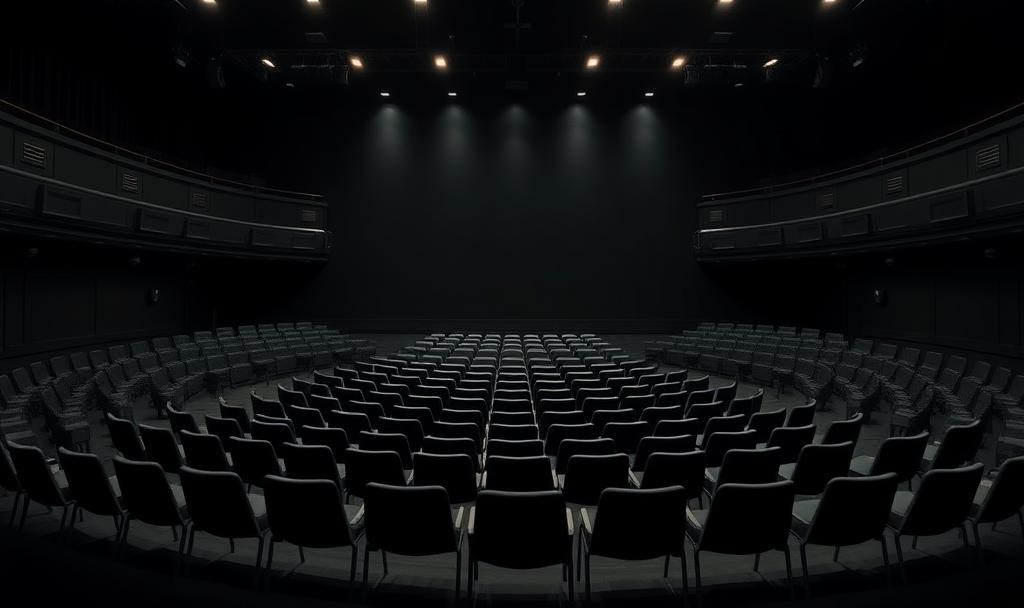Dramaturgy of Space for a Playwright
How the shape of your space, can and will shape your story.
Prefer this as a video? Watch here!
Prefer this as a podcast? Listen here!
Hello! Welcome to my weekly newsletter!
Enjoy a dose of my playwriting process,
writing confessions, and all the mess in between.
Often times, we think plays = themes, dialogues, characters, and plot.
But what about space?
And no, I’m not just talking about set design,
not just stage directions.
But space as dramaturgy — space that holds meaning or creates it.
Where is your story happening?
Where is it being told? Or what is it telling?
And how does that affect how your audience receives it?
Space as Place
Where a show is performed matters.
From large proscenium theatres to black boxes, to storerooms (yes, I’ve done that before)
For example you’re telling a story about Indigenous people, and the theatre sits on Indigenous land,
what does that mean for your story?
What energy does that space carry?
What history is beneath the cement floor?
And what does it ask of you as the writer?
Does your play need to acknowledge the space?
Or interact with it? Or even resist it?
Dramaturgy isn’t just what happens on stage.
It’s everything that surrounds it.
Space as Time
Space can alter the rhythm of a play. In large empty spaces that echoes, pauses are deafening — it stretches, he holds time… and a lot of it.
In tight spaces, there’s a level of discomfort, making every second feel like eternity.
The length of a walk, the distance between the audience entrance to its exit — the actors entrances and their exits. It becomes a fibre of dramatic texture, often heightening moments.
In a show I produced The Human Exhibit: Mentalhealth, when audiences entered, we closed the shutters — signifying a trap in time and inducing claustrophobia and the fear of being stuck.
Which leads me to…
Space as Power
If a character only exists upstage — what does that mean? What if they only ever appear in a tower, and nowhere else?
Ask yourself:
Who is centred?
Who is pushed to the edges?
Who doesn’t even appear, but is heard?
And why?
Space can be a metaphor for:
Status
Hierarchy
Class
Vulnerability
Rebellion
Ego
and more.
Proximity to the audience amplifies what you, the writer, intends.
Think about a courtroom, a confession booth, a public square, a bedroom. Who speaks loudly? Who stays silent? Who gets seen first?
Proximity can create intimacy or discomfort.
Space as Psychology
When I was writing the first draft of The Woman Who Was Afraid to Touch the Sun, I was very prescriptive — I wanted the audience in the round — four sides, surrounding the action.
Why? Because I wanted them to reflect off each other.
To see someone else’s reactions.
To realise they were being seen too.
To feel, in subtle and sometimes uncomfortable ways, that they were part of the room, and not separated from the main, very real, issues that the show tackles.
One side experiences everything, one side starts hearing before they can see, one side to see only a slit at first, and one side that only gets a projected screen.
That’s the subtext in staging.
I wanted the audience to feel what the characters feel —
unsure, gaslighted, lost, stuck.
Space changes how we feel seen, exposed, hidden,
complicit to what’s going on on stage.
Space as Character
This is a fun one for a writer — how we see space in relation to our characters.
Is the space one of them?
Staging a show:
On a staircase could be metaphor for transition, a risk, a choice to make (up or down).
A house — safety, comfort, extremely personal, drawing you in.
A hoarder’s apartment becomes a pressure cooker, uncontrolled but intended chaos.
How then do you let your characters respond to the room.
And how does the room respond back? Not literally… or does it?
Don’t just think staging, think dramaturgy of space.
So when you’re writing, ask yourself:
What does the audience need to feel physically? (Claustrophobia? Exposure?)
What does the space make possible? (Interruptions? Intimacy?)
Who sees what? Who misses what?
Could this play only be done in this space? Why?
Sure, a lot of this may be a directors job or a producers job.
But don’t forget, as playwrights, you have the power.
Communicate your intention.
Then have a conversation with the creative team.
So let the shape of the room,
the history of the walls,
and the gaps between bodies influence your script.
Because space is never neutral.
And when you invite it into your writing process,
it will give something back.
And it may even surprise you.
Do you write with dramaturgy of space in mind?



